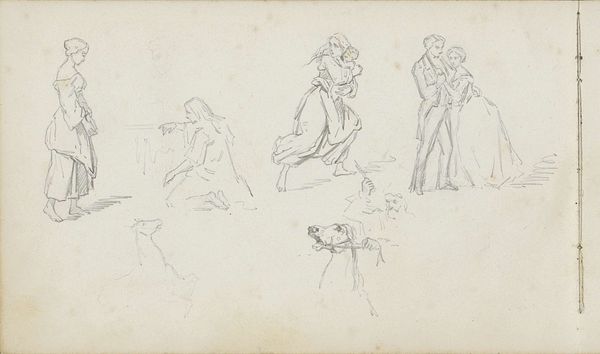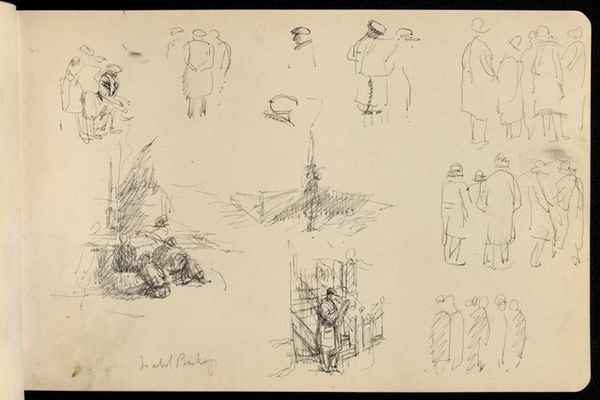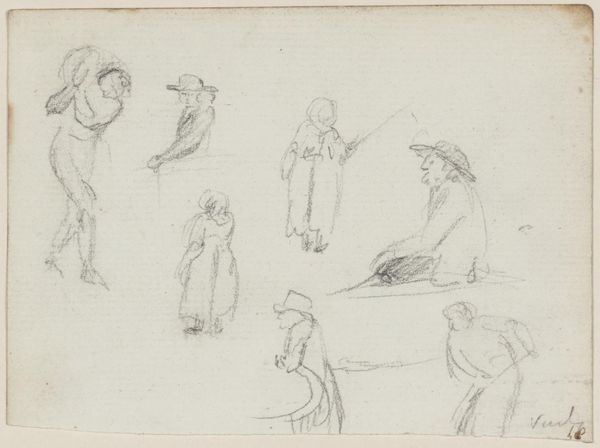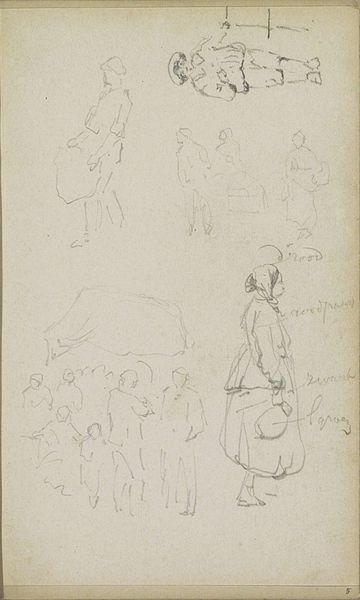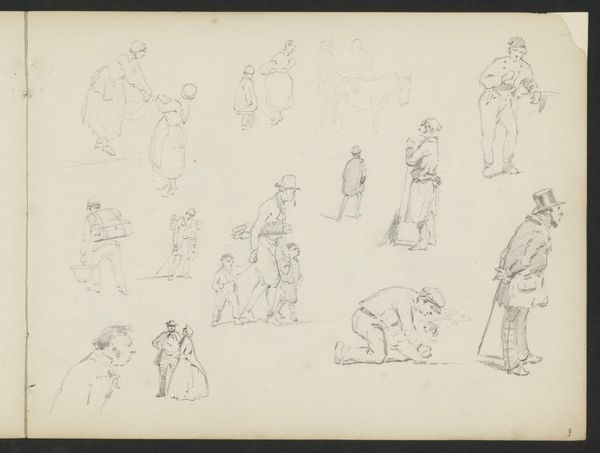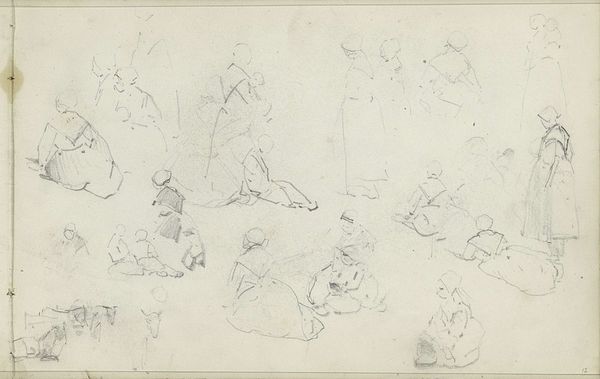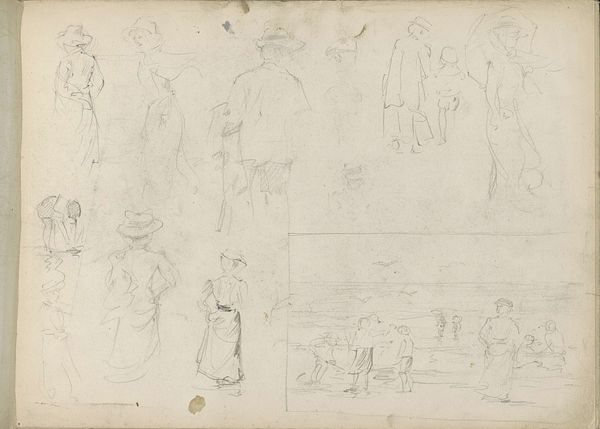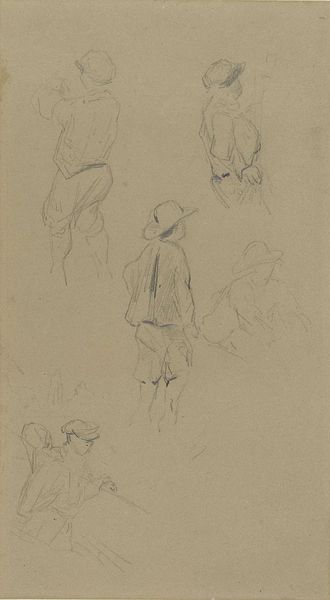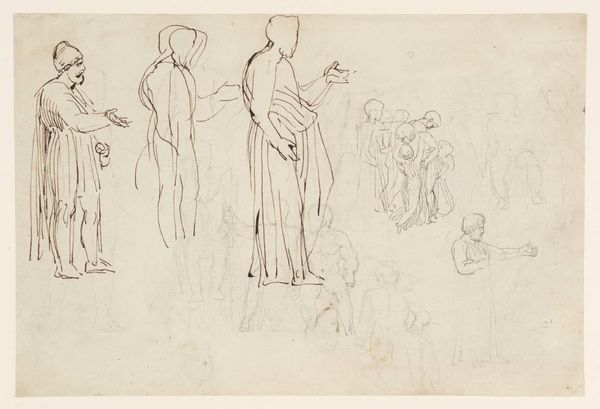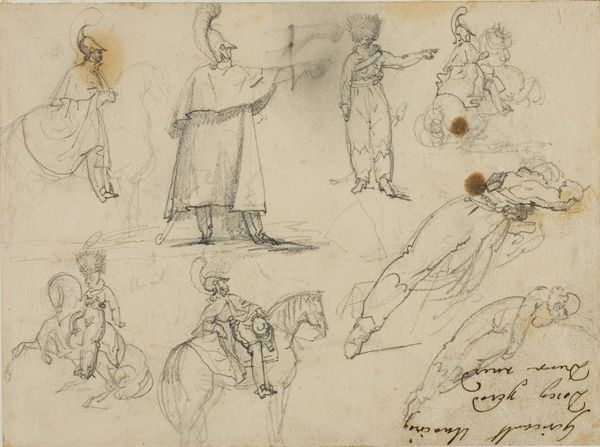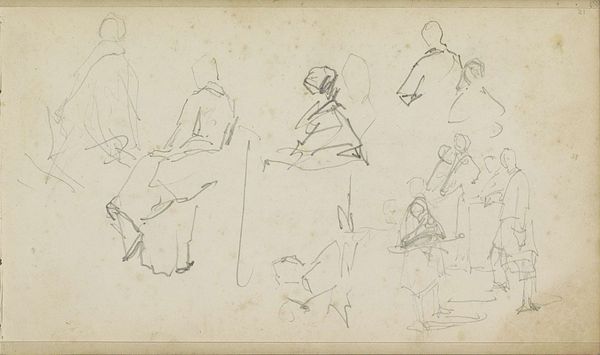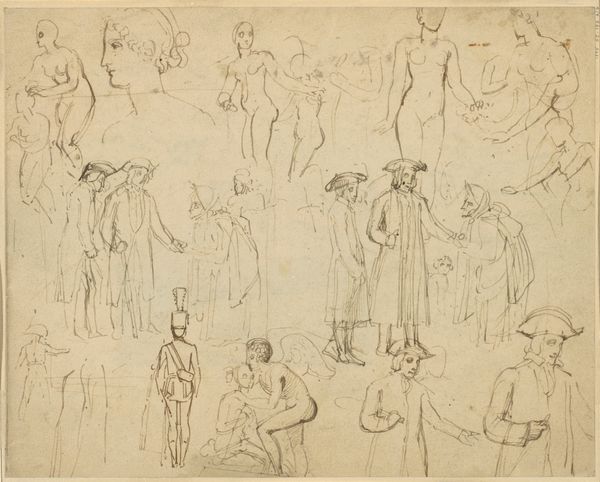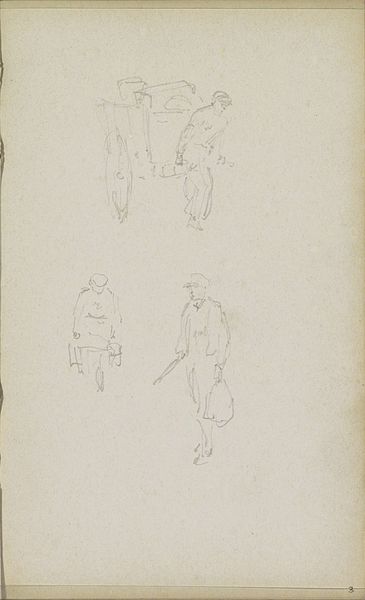
drawing, paper, pencil
#
drawing
#
pen sketch
#
landscape
#
figuration
#
paper
#
pencil
#
genre-painting
Copyright: Rijks Museum: Open Domain
Curator: This evocative pen and pencil drawing is titled "Studieblad met ezelrijders en strandbezoekers," which translates to "Study Sheet with Donkey Riders and Beach Visitors." It’s attributed to Monogrammist DS, dating somewhere between 1850 and 1950. What do you think? Editor: Immediately, I see a commentary on leisure and social class. The loose sketches give it an informal feel, yet these are clearly people with the time and resources to visit the beach and ride donkeys. Curator: I see that too. Think about the era, probably late 19th century given the style. These beach scenes were becoming increasingly popular as leisure activities democratized, even if only for a specific social stratum. The figure sketching in what looks like a deck chair in the bottom-left, for instance, is engaging with leisure as spectacle and subject matter. Editor: It's interesting that we can infer so much from something that is essentially just a collection of quick sketches. There's a casualness, almost a fleeting quality, to these impressions of people, like captured moments rather than posed portraits. It's also possible that this is just practice; working through poses for a later project. I’m most intrigued by the figures arranged somewhat evenly around the whole composition. They’re rendered with varying levels of detail – some faces are distinct while others are simply suggested by form, headwear, or pose. Curator: And look at how the artist has used line weight. There is an implied dynamism, capturing a bustling beach even with sparse strokes. These scenes of genre-painting became powerful social signifiers and status symbols in Western society, reinforcing certain social norms and power structures. Editor: True, it really opens up into ideas around performance and societal expectations surrounding who has the right to be on the beach and to leisure. Even simple sketches like these have layers of cultural meaning embedded within them. Curator: It also prompts a conversation about the rise of tourism. Beaches became popular sites of display, but simultaneously, private spaces for self-cultivation, all wrapped up in class and identity. Editor: Thinking about this "Study Sheet", I think its loose execution emphasizes how fleeting the scenes were at the time and as a record, makes it precious and personal today. Curator: Precisely! These simple lines allow us to understand evolving norms of the social conditions in those times.
Comments
No comments
Be the first to comment and join the conversation on the ultimate creative platform.
